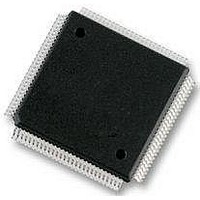MC9S12E128CPV Freescale Semiconductor, MC9S12E128CPV Datasheet - Page 503

MC9S12E128CPV
Manufacturer Part Number
MC9S12E128CPV
Description
Microcontrollers (MCU) 16 Bit 16MHz
Manufacturer
Freescale Semiconductor
Datasheet
1.MC9S12E128CPV.pdf
(606 pages)
Specifications of MC9S12E128CPV
Data Bus Width
16 bit
Program Memory Type
Flash
Program Memory Size
128 KB
Data Ram Size
8 KB
Interface Type
SCI, SPI
Maximum Clock Frequency
25 MHz
Number Of Programmable I/os
92
Number Of Timers
16 bit
Operating Supply Voltage
3.135 V to 5.5 V
Maximum Operating Temperature
+ 85 C
Mounting Style
SMD/SMT
Package / Case
LQFP-112
Minimum Operating Temperature
- 40 C
On-chip Adc
10 bit
On-chip Dac
8 bit, 2 Channel
Lead Free Status / Rohs Status
No RoHS Version Available
Available stocks
Company
Part Number
Manufacturer
Quantity
Price
Company:
Part Number:
MC9S12E128CPVE
Manufacturer:
Freescale Semiconductor
Quantity:
10 000
- Current page: 503 of 606
- Download datasheet (4Mb)
16.4.3.2
A breakpoint request to the CPU can be created if BKCEN in DBGC2 is set. Breakpoints based on a
successful comparator C match can be accomplished regardless of the mode of operation for comparator
A or B, and do not affect the status of the ARM bit. TAGC in DBGC2 is used to select either tagged or
forced breakpoint requests for comparator C. Breakpoints based on comparator C are disabled in LOOP1
mode.
16.5
The DBG module is disabled after reset.
The DBG module cannot cause a MCU reset.
16.6
The DBG contains one interrupt source. If a breakpoint is requested and BDM in DBGC2 is cleared, an
SWI interrupt will be generated.
Freescale Semiconductor
BEGIN
Resets
Interrupts
0
0
0
0
1
1
1
1
Breakpoint Based on Comparator C
Because breakpoints cannot be disabled when the DBG is armed, one must
be careful to avoid an “infinite breakpoint loop” when using tagged-type C
breakpoints while the DBG is armed. If BDM breakpoints are selected,
executing a TRACE1 instruction before the GO instruction is the
recommended way to avoid re-triggering a breakpoint if one does not wish
to de-arm the DBG. If SWI breakpoints are selected, disarming the DBG in
the SWI interrupt service routine is the recommended way to avoid
re-triggering a breakpoint.
TRGSEL
0
0
1
1
0
0
1
1
DBGBRK
MC9S12E128 Data Sheet, Rev. 1.07
Table 16-26. Breakpoint Setup
0
1
0
1
0
1
0
1
Fill trace buffer until trigger address
(no CPU breakpoint — keep running)
Fill trace buffer until trigger address, then a forced breakpoint
request occurs
Fill trace buffer until trigger opcode is about to execute
(no CPU breakpoint — keep running)
Fill trace buffer until trigger opcode about to execute, then a
tagged breakpoint request occurs
Start trace buffer at trigger address
(no CPU breakpoint — keep running)
Start trace buffer at trigger address, a forced breakpoint
request occurs when trace buffer is full
Start trace buffer at trigger opcode
(no CPU breakpoint — keep running)
Start trace buffer at trigger opcode, a forced breakpoint request
occurs when trace buffer is full
NOTE
Type of Debug Run
Chapter 16 Debug Module (DBGV1)
503
Related parts for MC9S12E128CPV
Image
Part Number
Description
Manufacturer
Datasheet
Request
R
Part Number:
Description:
Manufacturer:
Freescale Semiconductor, Inc
Datasheet:
Part Number:
Description:
Manufacturer:
Freescale Semiconductor, Inc
Datasheet:
Part Number:
Description:
Manufacturer:
Freescale Semiconductor, Inc
Datasheet:
Part Number:
Description:
Manufacturer:
Freescale Semiconductor, Inc
Datasheet:
Part Number:
Description:
Manufacturer:
Freescale Semiconductor, Inc
Datasheet:
Part Number:
Description:
Manufacturer:
Freescale Semiconductor, Inc
Datasheet:
Part Number:
Description:
Manufacturer:
Freescale Semiconductor, Inc
Datasheet:
Part Number:
Description:
Manufacturer:
Freescale Semiconductor, Inc
Datasheet:
Part Number:
Description:
Manufacturer:
Freescale Semiconductor, Inc
Datasheet:
Part Number:
Description:
Manufacturer:
Freescale Semiconductor, Inc
Datasheet:
Part Number:
Description:
Manufacturer:
Freescale Semiconductor, Inc
Datasheet:
Part Number:
Description:
Manufacturer:
Freescale Semiconductor, Inc
Datasheet:
Part Number:
Description:
Manufacturer:
Freescale Semiconductor, Inc
Datasheet:
Part Number:
Description:
Manufacturer:
Freescale Semiconductor, Inc
Datasheet:
Part Number:
Description:
Manufacturer:
Freescale Semiconductor, Inc
Datasheet:











